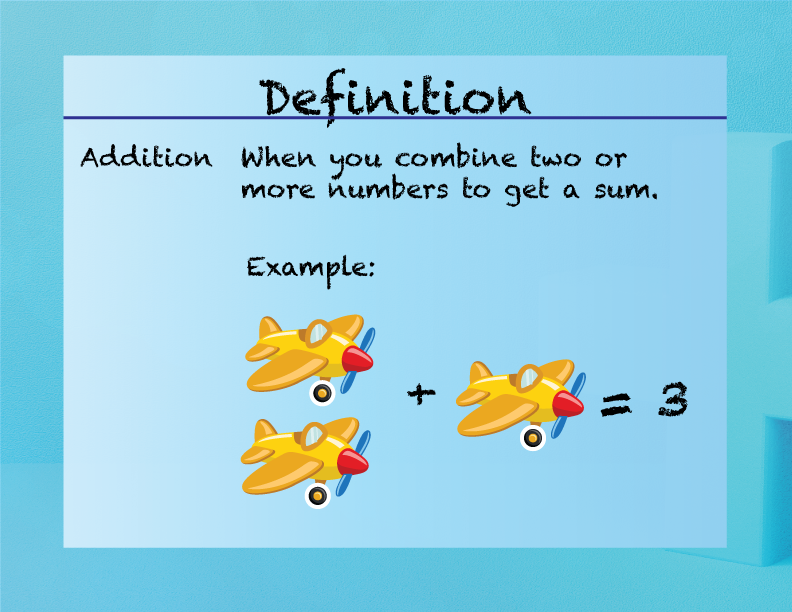
Display Title
Elementary Math Definitions--Addition Subtraction Concepts--Addition
Display Title
Addition

Topic
Addition and Subtraction
Definition
Addition is the mathematical process of finding the total or sum by combining two or more numbers.
Description
Addition is one of the four basic operations in arithmetic, essential for understanding mathematics. It involves combining two or more numbers to get their total sum. For example, adding 5 and 2 results in 7. Addition is used in various real-world scenarios, such as calculating the total cost of items, determining the total number of objects, and more.
In an equation like
5 + 2 = 7
5 and 2 are the addends, and 7 is the sum. Addition is associative and commutative, meaning the grouping and order of numbers do not affect the result. This makes addition a versatile tool in mathematics, allowing for flexibility in problem-solving.
In the classroom, teaching addition helps students develop a strong foundation in mathematics. It prepares them for more advanced topics such as multiplication and algebra. Understanding addition also enhances cognitive skills, including logical reasoning and analytical thinking.
Teacher's Script: "Let's talk about addition. When we add, we are putting numbers together to see how many we have in total. For example, if you have 5 candies and I give you 2 more, how many candies do you have now? Yes, you have 7 candies! Addition helps us find out the total number of things."
For a complete collection of terms related to Addition and Subtraction click on this link: Addition and Subtraction Collection
| Common Core Standards | CCSS.MATH.CONTENT.1.OA.B.3, CCSS.MATH.CONTENT.2.NBT.B.9 |
|---|---|
| Grade Range | 1 - 3 |
| Curriculum Nodes |
Arithmetic • Addition • Addition Expressions and Equations |
| Copyright Year | 2021 |
| Keywords | addition, subtraction, equation, place value |